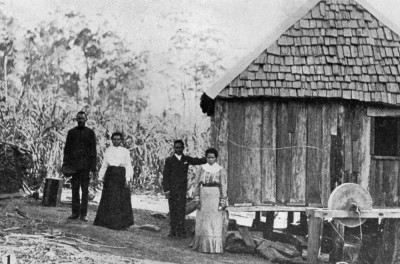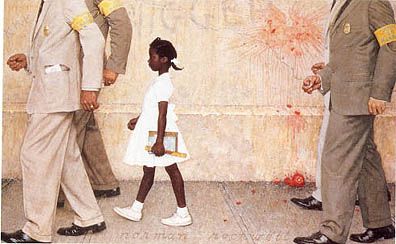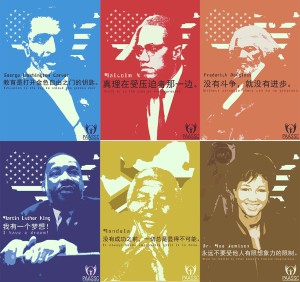 Raising African American children within the Chinese culture provides many strengths but also creates a number of crossroads. One of the most glaring for my family is the continued celebration of Chinese culture at every turn – the classroom, the library, the hallways, the many celebrations. Our school has an incredible library filled with books that celebrate Chinese culture through history, folklore, rituals and food. There is a clear tie to Chinese history, culture and folklore that stands apart from American culture and has, from my perspective, been lost in the Black experience – in my Black experience.
Raising African American children within the Chinese culture provides many strengths but also creates a number of crossroads. One of the most glaring for my family is the continued celebration of Chinese culture at every turn – the classroom, the library, the hallways, the many celebrations. Our school has an incredible library filled with books that celebrate Chinese culture through history, folklore, rituals and food. There is a clear tie to Chinese history, culture and folklore that stands apart from American culture and has, from my perspective, been lost in the Black experience – in my Black experience.
I have made a significant effort to strengthen the ways that the girls are immersed in Black history in a way that is purposeful and meaningful that helps them to be prideful and excited about their legacy and the journey of our ancestors. In their growing celebration of Black history and Chinese culture it is rare that I find opportunities to highlight the parallel journey and balance the two worlds they live in – Black and Chinese.
Sugar, by Jewell Parker Rhodes, has provided us with a wonderful opportunity to honor the shared history and the parallel process that can be found in both the Chinese American and African American experience. Rhodes’ main character, Sugar, is a 10 year old former enslaved African working on a sugar cane plantation coming of age immediately following Emancipation. Sugar is a strong and fearless young girl that articulates her journey and the era of Emancipation with clarity and curiosity. We’ve been reading it to the girls (ages 5 and 7) at bed time – a few chapters each night. They have become captivated with the story and learned so much about life on a plantation. Sugar’s story is so clearly written and so fascinating that it is not difficult for them to hold on to my every word. It has been a very powerful and POSITIVE experience for them.
Sugar is an easy character to fall in love with. She is spunky, fun and loves the art of story telling. She is playful and sometimes finds herself in trouble. Sugar hates her name. She hates everything to do with sugar. She hates cutting cane. She hates the sleepless nights preparing for Harvest. She hates most of all that she is alone. Initially the girls struggled with comprehending how Sugar could be on the plantation alone, without her mommy and daddy. But as the story unfolds they learn about the power of extended kin and the strong ties that create family regardless of bloodlines. There are many times that Sugar wants to play and she is forced to work. Although she is free she remains “stuck” in River Road with the older enslaved Africans at the plantation where she was born and is unable to leave.
The only other child on the plantation is the son of the owner and they are forbidden to play together. But as children do they often find themselves on great “adventures” that touch the playful heart of the child inside all of us.
What drew me to Rhodes’ Sugar is that the plantation owner brings in a group of Chinese men to replace the enslaved Africans of River Road. The endearing part of this story is how these men too become folded into the family and the way in which they actively seek to become members of this blended family. These foreigners – African and Chinese – form a bond as they realize that they have a shared journey. They are both displaced and attempting to find a home for themselves. They also open Sugar’s eyes to the world that exists off of the plantation. Her excitement and graciousness allows her to become a bridge between the two cultures/groups. As Sugar explores both worlds and is increasingly enchanted with the world outside of River Road the elderly enslaved Africans struggle with what it means to be free and the white Southerners struggle to adapt to change.
There is so much going on in this book that it offers a wonderful lesson plan for Chinese Immersion history teachers covering this period. Sugar looks at things from a different view.The backdrop of Sugar delicately and beautifully outlines the impact of Chinese exclusion – when Sugar’s Chinese friends had no pathway to US Citizenship – and the transition from slavery to Emancipation for African Americans from a child’s perspective. The author highlights the shared history of story telling in her inclusion of Bre’r Rabbit and the dragon stories of China which creates wonderful parallels.
“Sugar is a must read for young fans of historical fiction due to its fine writing, strong characters and perceptive attention to the period. I truly felt Sugar’s frustration with being free and yet not free to be herself. I loved her fondness for stories and her spunk. Her determination and her open hearted attitude towards change led the way for many of the adults in this story, which made me appreciate her all the more. This is an enthusiastic recommend for young readers grade 3 to 7.”
My daughters are younger than the recommended age but we were able to slowly inch into the story with myself or my husband providing age appropriate bridges and modifications where needed to help them embrace the story. This book is definitely a great addition for any family but especially for African American families raising Chinese language learners. Click here for a sample reading. We donated a copy to our school’s library! Please purchase a copy for yourself and/or your school. It is a must read.







